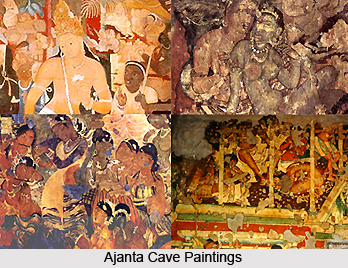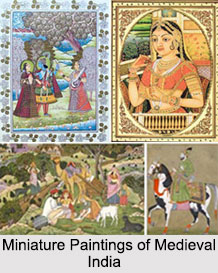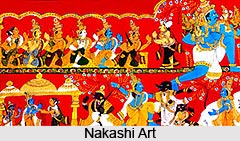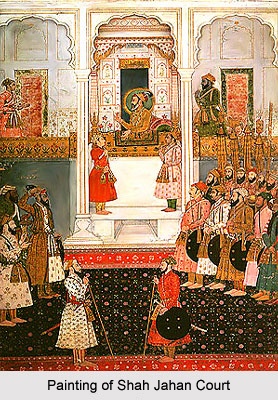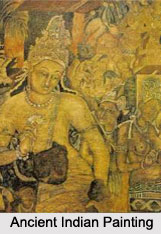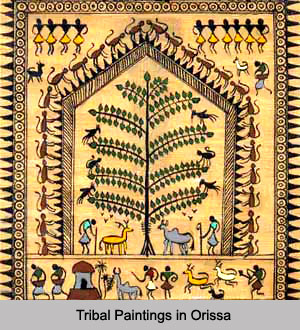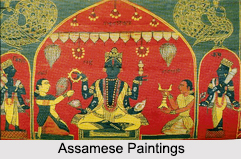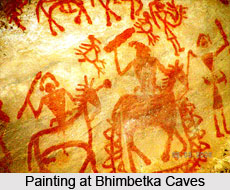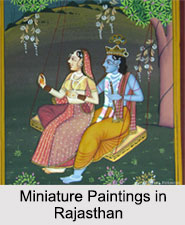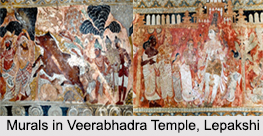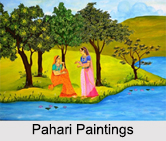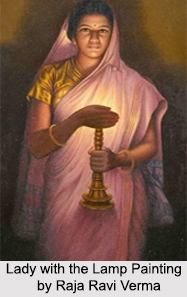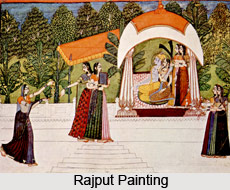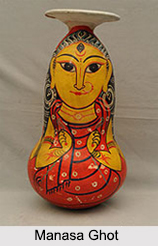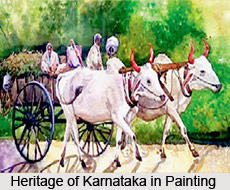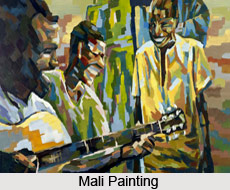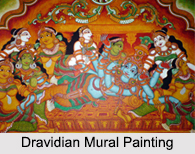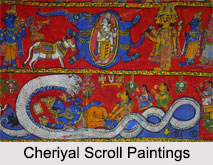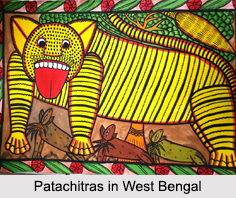 Originally serving as a visual device during the performance of a song, the art form of Patachitra in West Bengal is a component of an ancient narrative art. The Patachitras are actually painted narrative scrolls which are characterized by religious and social motifs of various images painted on cloth.
Originally serving as a visual device during the performance of a song, the art form of Patachitra in West Bengal is a component of an ancient narrative art. The Patachitras are actually painted narrative scrolls which are characterized by religious and social motifs of various images painted on cloth.
History of Patachitra in West Bengal
Known for its vibrant and expressive play of colours, the Patachitras in West Bengal follows a tradition of intangible cultural heritage. It is said that this form of folk art dates back to the 13th century and maybe even further in the small villages of Medinipur, Bankura, Purulia, Howrah, Hooghly and South 24 Parganas. The Patachitras in West Bengal are painted by a class of gypsy singing scroll painters variously known as patuas, chitrakars or patikars.
There are mentions of Bengal Patachitras in the Buddhist literature of 1st century A.D, the Haribansa of 2nd century and other forms of literature like Harshacharita and Uttararmacharita from 7th and 8th centuries respectively. In the book called Folk Art of Bengal by Ajitkumar Mukherjee, he has mentioned some mural style paintings by the Jadu- Patuas in the temples of Bankura District.
Themes of Patachitras in West Bengal
The word Pata or Pot is derived from the Sanskrit word patta which means a kind of fabric or silk cloth. There are 2 types of Pots based on religious and secularism, the religious pots encompass the story of Hindu epics and mythology like Ramayana, Mahabharata narrating stories of Hindu gods and goddesses like, Krishna, Chaitanya, Kali, Shiva and the indigenous Bengali folklore of Manasha and Chandi, Behula and Lakshinder being the most popular. The secular pots depicts important news events, scandals, accidents etc such as bus accidents at Narayangarh, rural elections, and other social causes like the rationing system, family planning, evils of the dowry system etc.
There have been suggestions on the basis of historical themes connected with the accompanied songs like Patua Sangeet, which the artist sings while unfurling the Patachitra. The Patua Sangeet or Poter Gan is a cultural tradition of the singing Bengal Patachitra and is famous in the villages of Birbhum, Jhargram, Burdwan and Murshidabad.
Types of Patachitras in West Bengal
The Bengal Patachitra is divided into some different aspects like Durga Pot, Chalchitra, Tribal Patachitra, Medinipur Patachitra, Kalighat Patachitra and etc. The Kalighat Patachitra, the last tradition of Bengal Patachitra is developed by Jamini Roy. The patuas usually produce types of patachitras, the first being a longish rolled paper displaying some acts of divine greatness or the description of any memorable event. Then there is the laterally rolled and the third category is a square shaped patachitra, and is a card shaped Pata, which is formed on the concept of a single impression.
Technique of Patachitras in West Bengal
Characterised by various peculiarities in colour and design, the different districts of West Bengal has different variations and techniques while painting Patachitras. The rolled pata paintings are usually 1 to 1.5 cubic in width and nearly 4 to 12 cubic in length. Short pieces of cloth are fixed at the 2 ends of the paintings to facilitate opening and displaying these long paintings. Thereafter, 2 pieces of cane of the same width as the painting are fixed laterally along the edges of the cloth pieces. The purpose of adding the cloth pieces is to ensure that that there is no damage to the paper while moving the cane sticks. The same procedure of adding cotton pieces and cane sticks at two ends of the paper is also followed in the case of the laterally rolled paintings.
Since it is a form of folk art, the colours used are produced by an indigenous process. The colours used for the painting are mixed in small earthen cups or in coconut shells cut into the shapes of bowls. It is said that the fine and coarse brushes are made from the hair collected from a young lamb"s shoulder or stomach and the very fine brushes are made with the hair gathered from a squirrel"s body or from a mongoose"s tail. In general, blue, yellow, green, red, brown, black and white are used in the Patachitra in West Bengal. Chalk dust is used for white colour, pauri for yellow, cultivated indigo for blue, bhushakali for black and mete sindur for red colour.
The Patachitras in West Bengal are part of a traditional and mythological heritage of Bengal.
